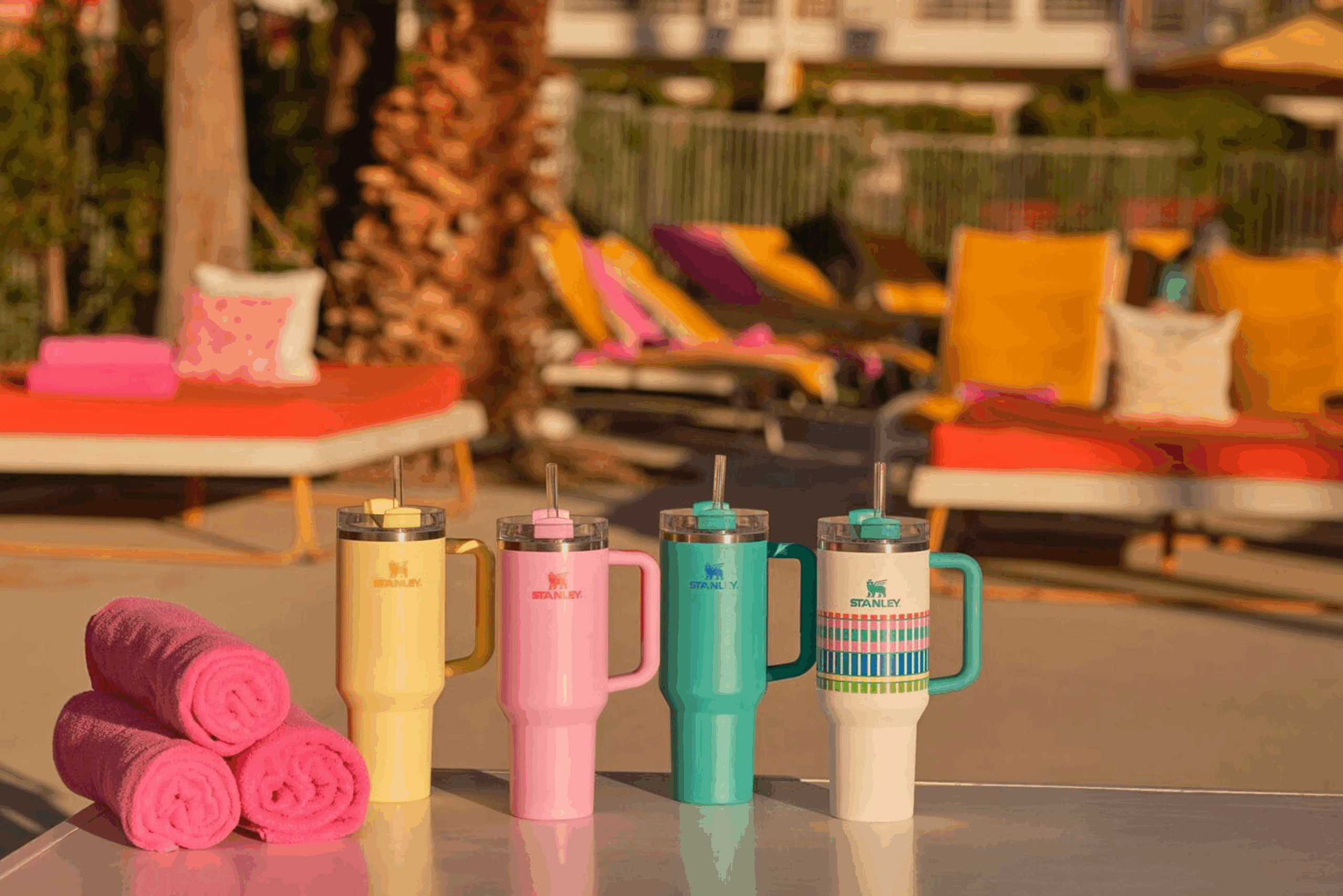
LUXE PARADOX
We explore the intersection of style, accessibility, and social dynamics, driving discourse on the evolving landscape of luxury and the fashion system.
Priced for Reaction: Inside the Business of Outrage Fashion
by Thea Elle | July 27, 2025 | Style Guide
Function is beside the point. What matters is what your bottle or bag says about you. A Stanley in a viral color or a four-figure tote isn’t there to serve—it’s there to signal. The more eye-popping the price, the more buzz it generates. People react, post, and debate, giving the product exactly what it needs: visibility. It’s not an accident. It’s strategy.

Designed to Offend and Sell
Luxury fashion no longer plays it safe. The goal is no longer quiet prestige but loud reaction. A $6,000 tote that looks like a grocery bag or a water bottle wrapped in designer nylon is not an oversight. It is a signal. These objects are meant to disrupt, not to serve.
Outrage travels fast, and fashion knows it. When something ridiculous starts trending, the internet does the marketing. The comments, the reposts, the collective disbelief all build hype. Success is no longer measured in sales alone but in how far a product can spread.
If you’re a luxury brand enthusiast on a budget, check out CRIS & COCO! You will only find better deals, with up to 90% off on authentic, high-quality products. Trust our quality satisfaction guarantee and 99 % satisfied customers since 2018 speak for themselves. Take advantage of this hidden gem!

Logic Doesn’t Sell
There was a time when luxury fashion was defined by precision, discretion, and taste. Now, it’s shaped by spectacle. A $6,000 tote that looks like a grocery sack or a microbag so small it barely fits a breath mint isn’t a mistake—it’s a calculated provocation. These objects are crafted not to solve problems but to ignite conversation. The more impractical the design, the louder the buzz.
This strategy works because it taps into a new kind of cultural economy. On platforms built around virality, confusion is powerful. If people are asking “why?” they’re also posting, tagging, and debating. Brands understand this dynamic well. The outrage becomes part of the product’s lifecycle. The meme, the headline, the viral moment—they all replace traditional marketing. In the end, you’re not just buying a bag. You’re buying into a cultural phenomenon, where absurdity is not a side effect, but a selling point.

The New Logic of Luxury
At face value, a high-end purse that mimics a takeout container or a leather holster made for a reusable water bottle seems like a punchline—fashion poking fun at itself. But in a world where visibility equals value, these exaggerated accessories gain traction fast. On social media, they aren’t treated as satire. They’re styled as status. The more surreal the item, the more likely it is to be seen, saved, and shared.
With enough repetition, the illogical starts to feel inevitable. When dozens of influencers show off the same impractical objects, the visual flood creates its own logic. The pieces begin to look normal, even essential. A thousand-dollar accessory that used to signal excess now signals belonging. It’s not about practicality or even beauty anymore. It’s about being part of the feed, part of the moment. In this new economy of taste, absurdity isn’t a barrier to entry—it’s the entire appeal.
SHOP CRIS & COCO HERE

Spectacle Over Substance
Luxury fashion has shifted from elegance to attention. Today’s designs don’t whisper quality—they shout personality. A warped leather bag or a shrunken clutch might leave you wondering how to use it, but that’s missing the point. These objects are crafted not for utility, but for virality. They’re meant to disrupt, to provoke, to earn their place in the scroll. In an era where attention is capital, absurdity sells.
The Stanley cup is proof. Once a no-nonsense drinking vessel, it now enjoys cult status thanks to its internet makeover. Suddenly, hydration had an aesthetic. And just like that, Prada entered the chat, offering a luxe interpretation that turned hydration into a flex. These aren’t bags and bottles anymore—they’re social signals. The question isn’t whether they’re practical. It’s whether they’re visible. And if everyone’s still looking, they’re still winning.
Luxury, Optimized for the Algorithm
Luxury used to whisper. Now it screams in pixels. Forget timeless quality—today’s status symbols are optimized for speed, shock, and shares. A microscopic handbag or a monogrammed bottle sling isn’t built to serve a function. It’s built to stop your scroll. Social platforms don’t care if something is smart—they care if it spreads.
As we double-tap, repost, and laugh, these objects gain momentum. Their worth is measured not in utility but in visibility. That absurd price tag? It’s not a barrier—it’s bait. The more we react, the more these products thrive. In this attention economy, absurdity isn’t just accepted—it’s engineered.

The performance is deliberate. These objects are designed to be photographed, flaunted, and fed into the machine of digital storytelling. Whether it’s a viral unboxing or a curated outfit post, the item becomes a prop in a personal brand. We’re not just accessorizing—we’re directing mini-productions with luxury as the lead character.
Luxury used to be exclusive because of scarcity or quality. Now, it’s exclusive because of context. If you know, you know. And if you don’t, you scroll past it—until enough posts teach you to care. In this way, the illusion becomes self-sustaining. The more we post, react, and share, the more value these absurd items accumulate. Not because they do more, but because they’re seen more. We’re not just buying things—we’re investing in the performance of relevance.